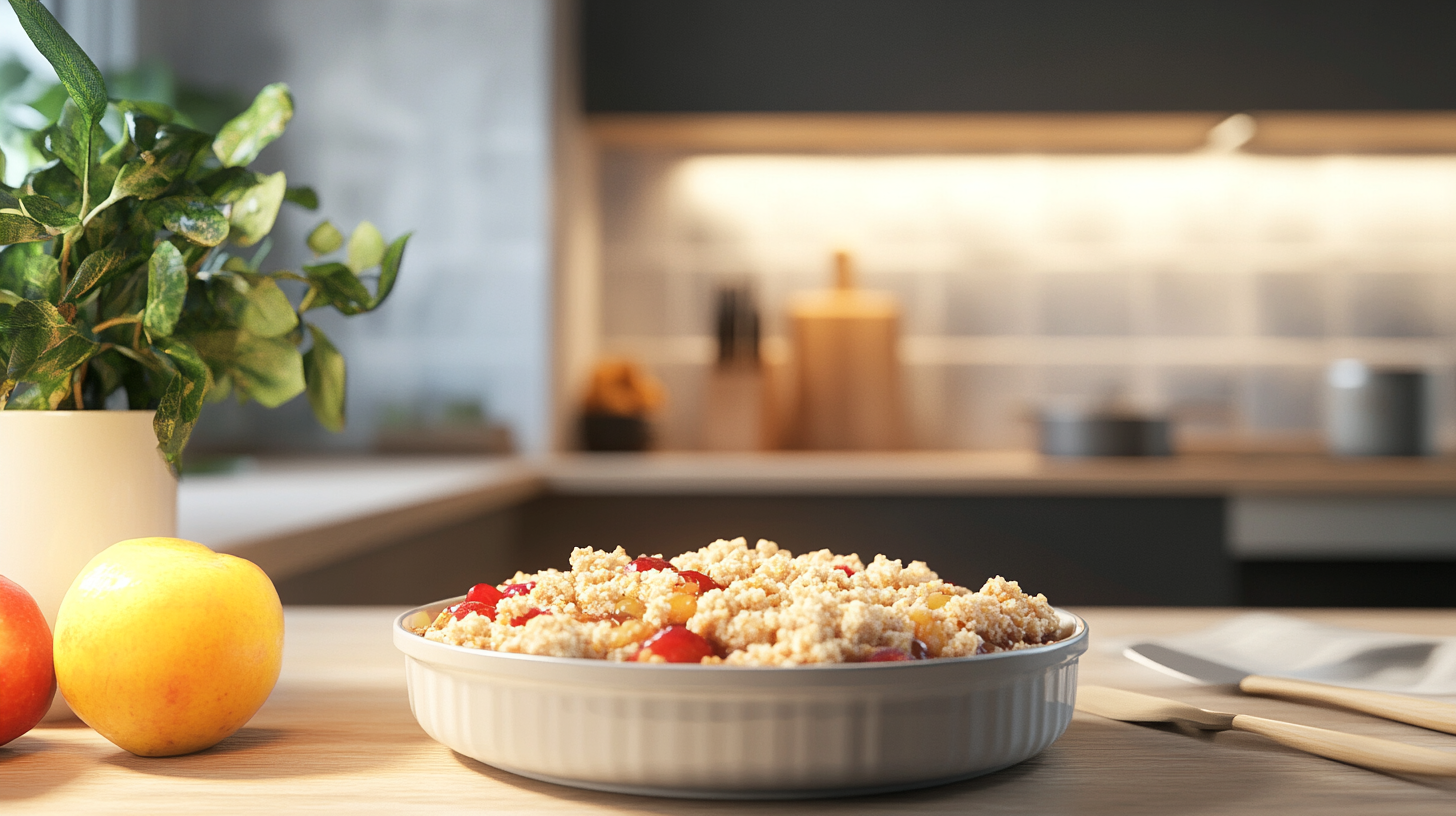Cobbler crumble combines elements from both cobblers and crumbles, two comforting desserts that offer a warm fruit base topped with a deliciously crunchy topping. Known for its easy preparation and versatility, is popular with bakers who enjoy seasonal ingredients and comforting textures. But what exactly goes into making this delightful dessert, and how does it differ from other fruit-based treats?
Let’s break down the ingredients and techniques that make c:c so unique. For those interested in creating different toppings, you might also enjoy learning about crumb topping essentials for even more dessert versatility.
Cobbler vs. Crumble vs. Crisp: What’s the Difference?
While similar, cobblers, crumbles, and crisps have distinct characteristics:
- Cobblers feature a biscuit or doughy topping, reminiscent of a cobbled street, which is where they get their name.
- Crumble has a streusel-like topping, made primarily of flour, butter, and sugar. This topping creates a looser texture that “crumbles” on top of the fruit.
- Crisp is close to crumble, but usually includes oats or nuts in the topping, which adds an extra crunch.
For more on crumble variations, you can explore this article on the difference between streusel and crumb toppings, which explains these subtleties.
Essential Ingredients of Cobbler Crumble
Creating a cobbler crumble involves a simple but effective list of ingredients. First, you’ll need to select your fruit base. Then, the topping ingredients come together to create the iconic contrast in texture:
- Fruit: Typical choices include apples, peaches, berries, and rhubarb. These fruits soften during baking, creating a sweet, juicy base.
- Topping:
- Flour: Provides structure to the topping.
- Butter: Adds richness and helps form a crunchy crust.
- Sugar: Sweetens and aids in caramelization.
- Spices: Cinnamon, nutmeg, and ginger are popular additions for depth of flavor.
Together, these elements create the signature balance of tender fruit and crisp topping that makes cobbler crumble so delightful.
Variations and Substitutions
Cobbler crumble can be adapted for dietary needs or personal tastes:
- Gluten-Free and Vegan Options: Replace traditional flour with almond flour or coconut flour for a gluten-free version. Vegan butter or coconut oil can be used instead of regular butter.
- Lower Sugar: Substitute sugar with maple syrup or honey for a more natural sweetness.
- Extra Texture: Add nuts, seeds, or shredded coconut to the topping for additional crunch.
If you want to try a similar variation, a cherry cobbler with crumb topping provides a fruity twist with a different base fruit.
Step-by-Step Recipe for a Classic Cobbler Crumble
Creating cobbler crumble at home is easy and rewarding. Follow these steps to make a delicious, comforting dessert:
- Prepare the Fruit Base: First, select fresh or frozen fruit and cut it into small pieces. Then, mix the fruit with sugar, flour, and spices.
- Make the Crumble Topping: Next, combine flour, sugar, and cold butter in a bowl. Use your hands or a fork to mix until crumbly.
- Assemble and Bake: Spread the fruit mixture in a baking dish and sprinkle the crumble on top. Finally, bake at 350°F (175°C) until the topping is golden and the fruit is bubbly.

The Perfect Texture and Flavor Profile
is all about texture. When prepared correctly, this dessert features a lovely contrast between the soft, juicy fruit base and the crisp, buttery topping:
- Fruit Layer: The fruit becomes tender and slightly caramelized, bringing out its natural sweetness.
- Crumble Topping: A balance of crumbly and crispy, with a golden finish, completes the dish.
Popular flavor combinations include apple-cinnamon, berry-vanilla, and peach-cardamom. For a variation on fruit-based crumbles, check out this guide to adding fruit to baked goods.
Serving Suggestions
Cobbler crumble is best served warm, but you can elevate it with some classic accompaniments:
- Vanilla Ice Cream: Adds a cold, creamy contrast.
- Whipped Cream: A light option to balance the richness.
- Powdered Sugar: Adds a touch of sweetness and a decorative finish.
Storage and Reheating Tips
If you want to store cobbler crumble, you’ll find it keeps well:
- Storage: Refrigerate for up to four days in a covered container.
- Reheating: Warm up in a 350°F oven for 10-15 minutes to restore crispness, or use the microwave for individual portions.
Frequently Asked Questions about Cobbler Crumble
- What’s the difference between cobbler and crumble?
Cobblers have a biscuit-like topping, while crumbles feature a streusel topping that’s thinner and crumblier. - Can you make cobbler crumble with any fruit?
Yes, cobbler crumble is versatile and works well with berries, apples, peaches, and other seasonal fruits. - Is cobbler crumble healthy?
While often high in sugar and fat, cobbler crumble can be modified by reducing sugar or using whole-grain flour. - How do you prevent soggy cobbler crumble?
Ensure the fruits aren’t too juicy and add a bit of flour to the fruit mixture to absorb excess moisture. - How do you get a crispy topping?
Using cold butter and baking until golden helps achieve a crisp topping.
 Pro Tips for a Perfects
Pro Tips for a Perfects
If you’re aiming for the ideal cobbler crumble, consider these pro tips:
- Cold Butter: Use cold butter to keep the crumble texture light and crumbly.
- Adjust Sweetness: Based on the fruit you use, you may need more or less sugar.
- Bake Evenly: Rotate the dish during baking for even color.
Troubleshooting Common Issues
If your cobbler crumble isn’t as you’d hoped, try these solutions:
- Soggy Topping: Bake uncovered to allow moisture to escape.
- Uneven Baking: Spread the topping evenly and check often for color.
Is a cozy, flexible dessert that suits any season. From the buttery, crisp topping to the tender fruit, this dish brings together simple ingredients for a delightful treat every time! For further inspiration, explore fruit-infused baking options and experiment with different flavors to make each cobbler crumble uniquely yours.

